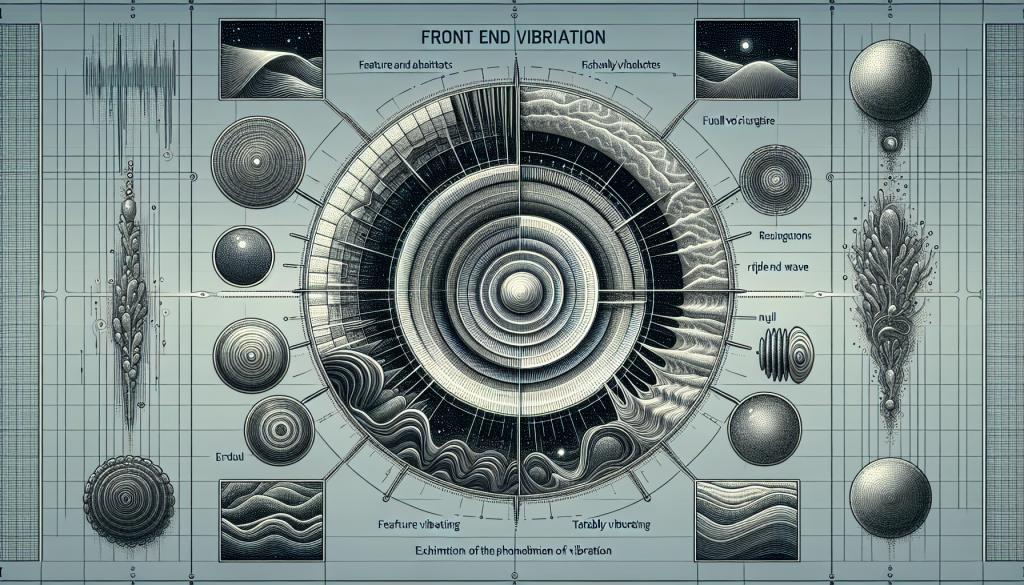Figuring Out Front End Vibration
Feeling your car shake up front? That’s not just annoying—it’s a sign something’s up. Knowing what to look for and what might be causing it can save you a lot of headaches (and money).
What to Watch For
Front end vibration can show up in a few different ways. Here’s what to keep an eye on:
- Steering Wheel Shakes: If your steering wheel’s doing the cha-cha while you drive, especially when you hit higher speeds, you’ve got a problem. Check out more on this in our steering wheel vibration article.
- Car Shakes When Braking: If your car feels like it’s shivering when you hit the brakes, it might be a brake issue. Dive deeper into this with our car shakes when braking piece.
- Vibration When Accelerating: If your car starts to shake when you step on the gas, it could be a problem with the drivetrain or engine mounts. Learn more in our car vibration when accelerating article.
- Constant Vibration at High Speeds: If your car’s got a steady shake when you’re cruising fast, it might be a tire or wheel issue. Get the scoop in our car shaking at high speeds article.
What Could Be Causing It
There are a bunch of reasons why your car might be shaking. Here’s a rundown:
| Cause | What’s Happening |
|---|---|
| Tire Imbalance | If your tires aren’t balanced, they’ll spin unevenly and cause vibrations. Regular balancing can nip this in the bud. |
| Worn Out Tires | Tires that are worn unevenly or damaged can make your car shake. Check and replace worn out tires when needed. |
| Brake Rotor Issues | Warped or damaged brake rotors can cause vibrations, especially when braking. Read more about brake rotor vibration. |
| Suspension Problems | Worn out suspension parts like bushings or shocks can make your ride bumpy. Learn more in suspension vibration. |
| Bent Wheels | Bent or damaged wheels can cause vibrations. Find out more about bent wheel vibration. |
| Wheel Bearings | Bad wheel bearings can make a humming noise and cause vibrations. Check out wheel bearing vibration. |
| CV Joint Issues | Problems with CV joints can cause vibrations, especially when turning. Read about faulty CV joint. |
Spotting these signs and knowing what might be causing them can help you fix the problem and get back to a smooth ride. For a full guide on figuring out car vibrations, check out our vehicle vibration diagnosis article.
Fixing That Annoying Front End Vibration
Feeling your car shake and rattle can be a real pain, right? Let’s get to the bottom of it and smooth things out. Here’s a no-nonsense guide to figuring out and fixing front end vibrations.
How to Figure Out What’s Shaking
-
Look Over Everything: Start by eyeballing the front end. Check out the tires, wheels, suspension, and steering for anything that looks off.
-
Balance and Align Tires: Wobbly or crooked tires are a common culprit. Make sure they’re balanced and aligned properly.
-
Check the Wheels and Tires: Look for worn-out tires, tire cupping, or bent wheels. These can all make your ride bumpy.
-
Inspect Suspension and Steering: Worn shocks, struts, and bushings can cause vibrations. Give them a good look.
-
Brake Check: Look at the brake rotors and pads. Warped or worn brakes can make the front end shake, especially when you hit the brakes.
-
Driveshaft and Axles: Check these for any damage or wear. They can also cause vibrations.
-
Engine and Transmission Mounts: Worn mounts can make the front end vibrate. Check these out too.
-
Take a Test Drive: Drive around and see when the vibrations happen. Is it at high speeds, when you turn the wheel, or when you accelerate?
How to Fix the Shakes
Once you know what’s causing the problem, here’s how to fix it:
-
Tire and Wheel Fixes:
- Balance and Align: Make sure your tires are balanced and aligned.
- Replace if Needed: Swap out worn tires or bent wheels.
-
Suspension and Steering Repairs:
- Replace Worn Parts: Change out old shocks, struts, and bushings.
- Check Steering: Make sure all steering parts are in good shape.
-
Brake Fixes:
- New Rotors and Pads: Replace any worn or warped brake parts.
- Check Calipers: Make sure the brake calipers are working right.
-
Driveshaft and Axle Repairs:
- Replace Damaged Parts: Swap out any bad driveshafts or axles.
-
Engine and Transmission Mounts:
- Replace Worn Mounts: Change out any bad mounts to reduce vibrations.
-
Extra Tips:
- Regular Maintenance: Keep up with regular car maintenance to avoid these issues.
- Get Professional Help: If you’re stuck, get a pro to check it out.
By following these steps, you can get rid of those annoying front end vibrations and enjoy a smoother ride. For more tips, check out our articles on car shakes when braking, car shakes at idle, and car shakes in drive.



